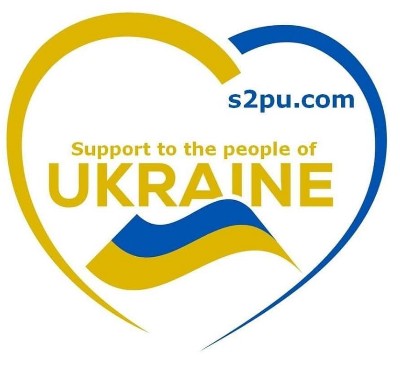Calls For Holodomor Famine To Be Recognized As 'Genocide'
.
Historical note on the U.S. government position regarding the Holodomor as genocide as of December 2018:
2018 was a breakthrough year with regard to the U.S. government, through Congressional resolutions, recognizing the Holodomor in Ukraine as an act of genocide. Both the Senate in S.Res. 435 (115th) and the House of Representatives in H.Res. 931 (115th) passed identical “simple resolutions” that included that recognition in the body of the legislation.
Among the 5 concluding statements of each resolution, it is stated that the Congressional body passing the resolution:
(3) recognizes the findings of the Commission on the Ukraine Famine as submitted to Congress on April 22, 1988, including that Joseph Stalin and those around him committed genocide against the Ukrainians in 1932–1933;
The full text of the resolutions, as well as details of their legislative history can be found by clicking on the linked resolution numbers above.
Simple resolutions, are “non-binding” and do not have the force of law. They are not sent to the President for his signature.
A review of previous efforts:
- Congressional resolutions
For decades, motions have been brought up by members of Congress to acknowledge the horror of the famine deliberately inflicted by Stalin’s regime and its consequences. In fact, as early as May 28, 1934, a draft resolution was submitted by Congressman Hamilton Fish that pointed out
“…Whereas the Government of the Union of the Soviet Socialist Republics, although fully aware of the famine in Ukraine and although having full and complete control of the entire food supplies within its borders, nevertheless failed to take relief measure designed to check the famine or to alleviate the terrible conditions arising from it, but on the contrary, used the famine as a means of reducing the Ukrainian population and destroying the Ukrainian political, cultural, and national rights….” [italics mine]. (Holodomor Reader, pp. 300-301).
Interestingly, this early 1934 text clearly demonstrates the U.S. government’s full awareness of the broad-ranging lethal INTENT of the famine, (the term genocide did not exist yet).There is no record that the resolution passed, however. It is also clear that there was no effort on the U.S. government’s part to get involved in the issue. The resolution merely expressed “hope” that the USSR would alter its policy, and that U.S. citizens would be allowed to send aid to the “famine-stricken regions of Ukraine.”
After nearly 5 decades of silence since that resolution, U.S. official documents began making occasional reference to the Holodomor as genocide, but there was no Congressional resolution that actually explicitly “resolved” or directly “recognized” that the Holodomor is genocide.
The U.S. Commission on the Ukraine Famine. Investigation of the Ukrainian Famine, 1932-1933: Report to Congress. (1988), in its Executive Summary lists 19 findings, of which no. 16, states: “Joseph Stalin and those around him committed genocide against Ukrainians in 1932-1933.” This statement was the closest to an official declaration; however, the findings of commissions – even when established by law, as this Commission was in 1985 – are considered merely advisory. On the other hand, Congressional resolutions must be considered worthy of deliberation, and then approved by vote from the entire Senate or House.
Many websites prior to 2018, including Wikipedia, listed the U.S. among the countries that recognize the Holodomor as genocide. Initially, Wikipedia cited as the recognition document: H. RES. 356 [108th] “Expressing the sense of the House of Representatives regarding the man-made famine that occurred in Ukraine in 1932–1933.” (2003). However, nowhere does this document “resolve” that the famine is genocide. It simply refers to the US Commission finding no.16 in one of several “whereas” statements that contribute to the final parts of the resolution, among them that: “this man-made famine was designed and implemented by the Soviet regime as a deliberate act of terror and mass murder against the Ukrainian people.”
In the Senate, also in 2003, S.RES. 202 [108th] – “A resolution expressing the sense of the Senate regarding the genocidal Ukraine Famine of 1932-1933” was introduced that, did in fact resolve (#4, on p. 3):
“(4) the man-made Ukraine famine of 1932–33 15 was an act of genocide as defined by the United Nations Genocide Convention;” Unfortunately, S. Res. 202 died in Committee and was never put to a vote on the floor.
Another resolution was passed in the House in 2008: H. RES.1314 [110th] which clearly describes the genocidal nature of the famine and refers to the US Commission findings, but again like the 2003 House resolution, did not call the famine genocide, or resolve that it was genocide.
B: Significant related legislation:
On October 13, 2006, President George W. Bush signed into law Public Law 109–340 authorizing the Government of Ukraine to establish a memorial on Federal land in the District of Columbia to honor the victims of the Ukrainian famine-genocide of 1932–1933. This memorial was officially dedicated in November 2015. The fact that the wording of the law included the term “famine-genocide,” was considered by many to be an implicit acknowledgment by the U.S. government of the Holodomor’s status as genocide.
It has taken 85 years for the U.S. government to acknowledge Ukraine’s 1930’s famine as genocide. It may take many years longer for everyone to understand and acknowledge the full scope of this genocide we call the Holodomor.


